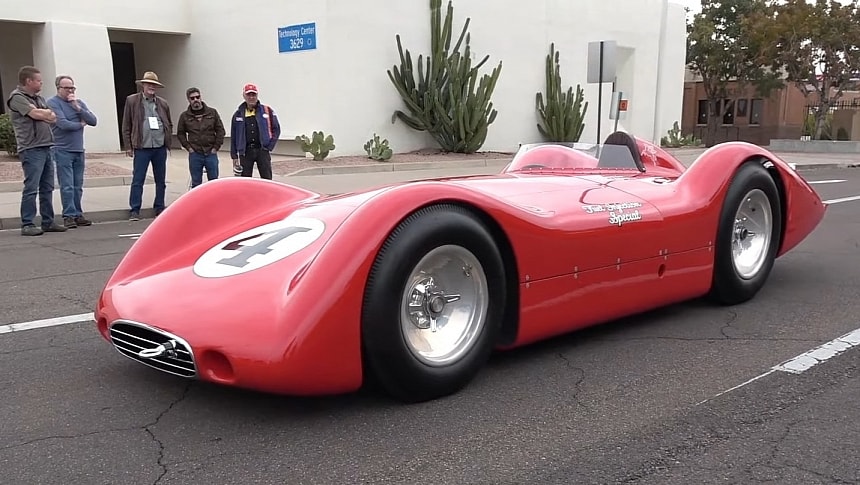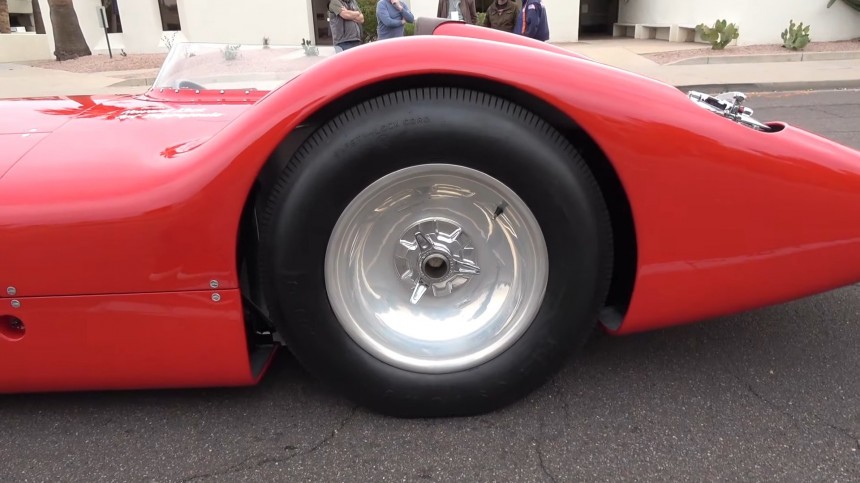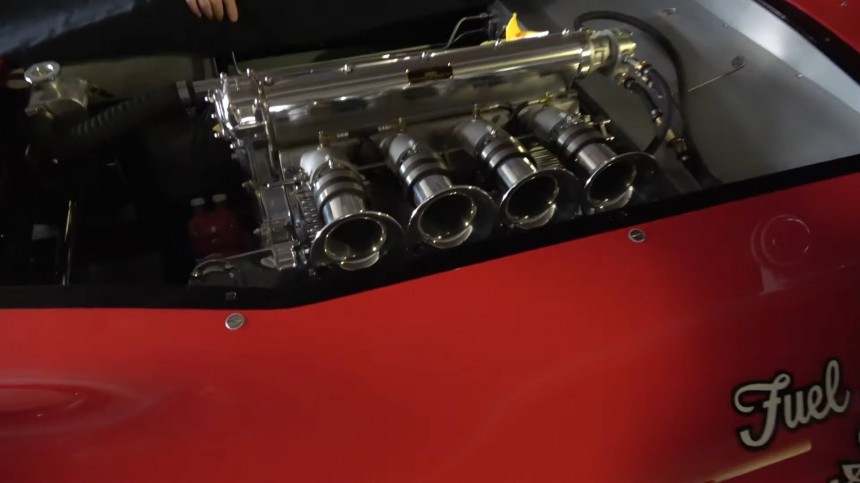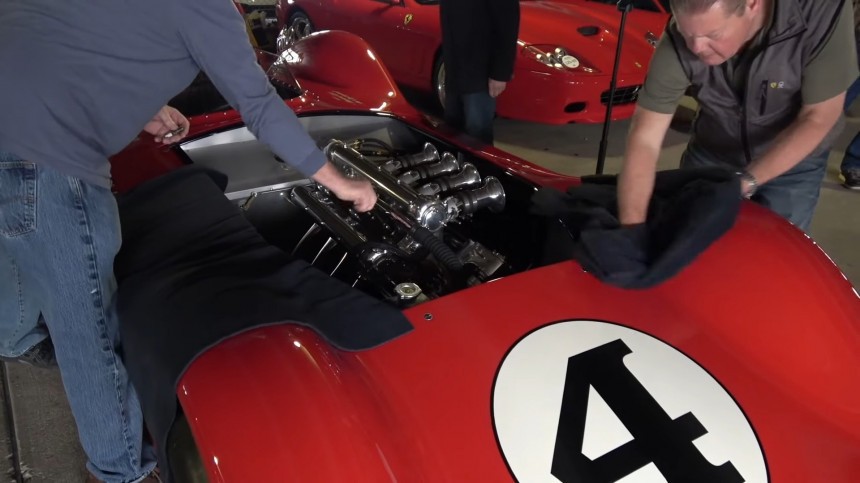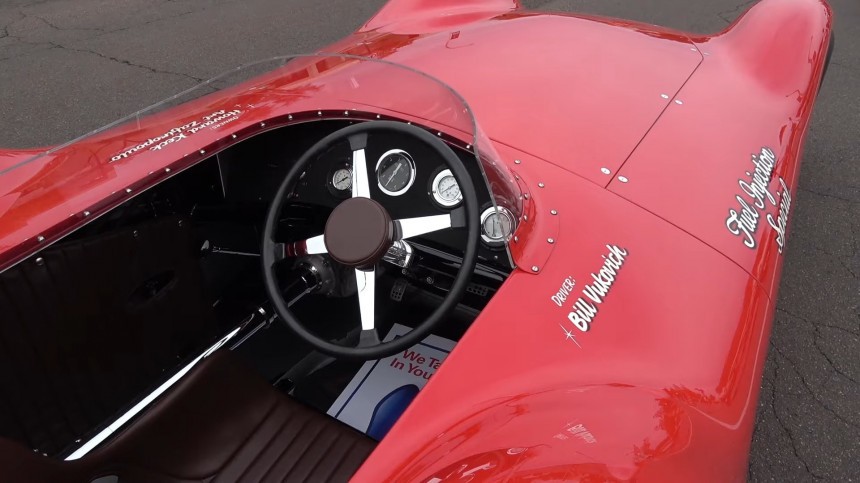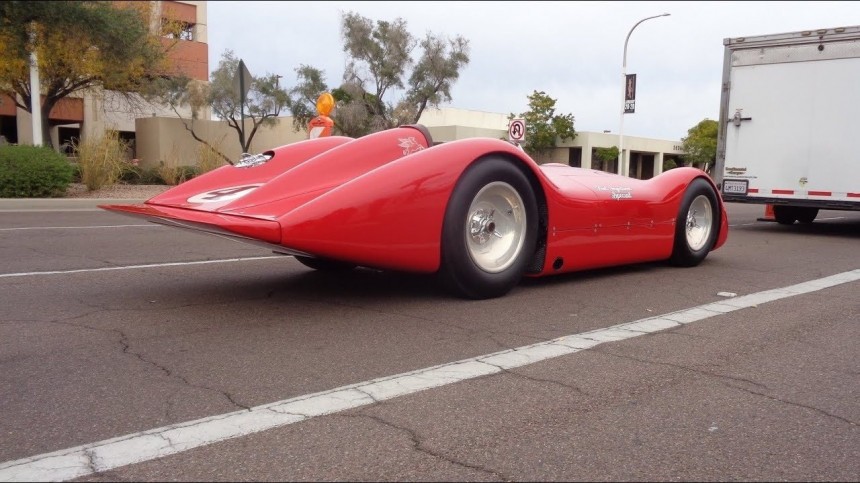In 1955, a fatal track collision ended the life of one of the greatest racers of the era, Bill Vukovich, and his team’s ambitions to introduce active aerodynamics to American motorsports. The Quinn Epperly Fuel Injected Special was a sleek machine designed in the wind tunnel but arrived too late for the Indy 500 race of the year. Following the mid-race death of the driver it was intended for, the car was never completed for racing.
‘Aerodynamics are for people who can’t build engines.’ Old man Ferrari was known for his arrogance and full-metal-jacket contempt for anyone with different opinions. But he was also dead wrong on more occasions than one. It’s not about the size of the engine in a race but how fast that engine can push the car through a thick cushion of invisible resistance.
That’s how aerodynamics became a mainstay of motoring – particularly racing – with enormous budget cuts going into research and development. Nowadays, it’s common practice to test a racecar’s ability to split the air in any way, shape, or form imaginable, from duct tape and ball of yarn to wind tunnels to computer-generated simulations and whatnot.
The Germans from Mercedes and Auto Union (the latter we know as Audi today) have proven that a flowy profile of a car’s body is as important as its engine, if not more so. The speed records – broken and then set – by the Silver Arrows were enough to prompt the rest of the piston-centric world to notice.
If ever there was a forever-lasting love story in America, that’s the love for speed – and car makers, big and small, wouldn’t pass the opportunity to gain a few extra miles per hour on the highspeed banks of the oval brickyards. After the murky waters of the World War settled (that would be WWII), racing resumed with amplified push and energy. The technological leaps made during and for the war effort were now translated into the automotive language for the masses (here’s looking at you, Mother Mopar, and your HEMI lovechild).
In the early 50s, new stars ascended in the famed Indianapolis 500-mile joust. Names like Frank Kurtis, Quinn Epperly, Frank Coons, Howard Keck, Bill Vukovich, or Fred Offenhauser became synonyms for ‘speed.’ in the mid-50s, the competition rose so fierce at the Indy 500 that competitors started looking for alternate means of going faster than the next guy.
The natural formula was to improve engines – and the Offenhauser inline-four monobloc powerplant became the go-to option for anyone who was someone in the open-wheel racing world. But when the horsepower didn’t cut it, constructors turned to the other side of racing: aerodynamics. That’s when the streamlined cars emerged, and their air-splicing mutiny came within an inch of changing Indy forever.
It all started in the early 50s when a very ambitious racing driver – Bill Vukovich – made his name heard on the ovals in Indiana. With financial support from oil tycoon Howard Keck, Vukovich quickly established a solid reputation as a formidable driver – almost unanimously hailed as the greatest of his generation.
After mechanical issues stole the checkered flag away from him in ’51 and ’52, he took home the Big W in the following years unprecedentedly. In 1952, he was forced to abandon after his steering broke down with nine laps to go in a race where Vukovich held the front position for 150 laps.
In the following season, he demolished the competition with a devastating 195 laps led out of the 200 of the run, winning the race with flying colors. In ’54, he climbed on the first step of the podium again (this time with 90 laps on his ‘Led’ tab). Having won two consecutive Indy 500 editions, the impetuous racer put a three-peat in his iron sights, and fate appeared to be on his side. No driver had scored a three-in-a-row triumph at the Indy 500 until then – and no one has done it since.
Vukovich and his sponsor, Howard Keck, turned to the famed body manufacturer Quinn Epperly to create a magical hat and pull a rabbit out of it. Using a roadster frame built by Frank Kurtis (another Indy legend in his own right), Epperly’s team shaped a car so fluid it could sit next to any automotive demigod of today without batting an eyelid.
See it in the video below, courtesy of Lou Costabile, coming out of restoration following a three-decade-long ownership by Howard Keck. Sadly, the car never raced an inch from 1955 until today because of a tragic moment that marred its fate forever. Epperly didn’t manage to prepare the car for the Indy 500 race in 1955, so Bill Vukovich took the wheel of another Kurtis machine – a regular open-wheel missile.
Things were looking fantastic for the aggressive Vukovich, who was sitting on a comfortable 17-second lead in lap 57 – with 50 of them ahead of the pack. He was so commanding in his race dominance that he caught up with slow drivers.
It would have been business as usual for the champ had it not been for a catastrophic crash in front of him that pushed his car over the outside wall. Vukovich’s racer cartwheeled mid-air several times, crashed on a group of parked cars, and then came to a halt, wheels-side up. Bill Vukovich was killed instantly - see the thrilling moments of the crash in the second video.
The accident pushed Howard Keck – the sponsor of the Indy 500 streamlined car enlisted for the 1955 events but never raced – out of motoring for good. He didn’t have the stomach to part ways with the car and kept it for another three decades, with only the suspension, frame, and body.
The first buyer had it restored to original specs, with the help of Quinn Epperly himself, after it was purchased from its original owner. In 1997, the car was sold at a Christie’s auction for $129,000. In 2019, Art Zafiropoulo, the gentleman in the video, bought it again (for $385,000), and proceeded to restore it with a 'cost-no-object' mindset.
The car’s body was designed using the wind tunnel at Cal Tech – presumably, this is the first race car to be profiled using this aerodynamic tool - and it was intended to be fitted with a supercharged V8. The bespoke powerplant never made it under the hood, and a fuel-injected 270-cubic-inch (4.4-liter) Offy straight-four engine sits – and roars! – in its awkward offset to the left position. Thanks to its monobloc construction, the small engine delivers around 420 hp (a 15:1 compression ratio for the alcohol fuel is the main reason for the power output).
At the back of the car, the adjustable-height tail is a true active aerodynamic spoiler – it would lower or raise as needed, allowing for high speeds in the straights or better down-force-backed grip in the corners. The builders originally designed a four-speed manual gearbox and solid-axle tubular-shock suspension. Fatefully, the setup never got to rev up on the steep banks of an oval. If it had, we would have probably referred to open-wheel Indy cars as ‘vintage.’
That’s how aerodynamics became a mainstay of motoring – particularly racing – with enormous budget cuts going into research and development. Nowadays, it’s common practice to test a racecar’s ability to split the air in any way, shape, or form imaginable, from duct tape and ball of yarn to wind tunnels to computer-generated simulations and whatnot.
The Germans from Mercedes and Auto Union (the latter we know as Audi today) have proven that a flowy profile of a car’s body is as important as its engine, if not more so. The speed records – broken and then set – by the Silver Arrows were enough to prompt the rest of the piston-centric world to notice.
In the early 50s, new stars ascended in the famed Indianapolis 500-mile joust. Names like Frank Kurtis, Quinn Epperly, Frank Coons, Howard Keck, Bill Vukovich, or Fred Offenhauser became synonyms for ‘speed.’ in the mid-50s, the competition rose so fierce at the Indy 500 that competitors started looking for alternate means of going faster than the next guy.
The natural formula was to improve engines – and the Offenhauser inline-four monobloc powerplant became the go-to option for anyone who was someone in the open-wheel racing world. But when the horsepower didn’t cut it, constructors turned to the other side of racing: aerodynamics. That’s when the streamlined cars emerged, and their air-splicing mutiny came within an inch of changing Indy forever.
After mechanical issues stole the checkered flag away from him in ’51 and ’52, he took home the Big W in the following years unprecedentedly. In 1952, he was forced to abandon after his steering broke down with nine laps to go in a race where Vukovich held the front position for 150 laps.
In the following season, he demolished the competition with a devastating 195 laps led out of the 200 of the run, winning the race with flying colors. In ’54, he climbed on the first step of the podium again (this time with 90 laps on his ‘Led’ tab). Having won two consecutive Indy 500 editions, the impetuous racer put a three-peat in his iron sights, and fate appeared to be on his side. No driver had scored a three-in-a-row triumph at the Indy 500 until then – and no one has done it since.
See it in the video below, courtesy of Lou Costabile, coming out of restoration following a three-decade-long ownership by Howard Keck. Sadly, the car never raced an inch from 1955 until today because of a tragic moment that marred its fate forever. Epperly didn’t manage to prepare the car for the Indy 500 race in 1955, so Bill Vukovich took the wheel of another Kurtis machine – a regular open-wheel missile.
Things were looking fantastic for the aggressive Vukovich, who was sitting on a comfortable 17-second lead in lap 57 – with 50 of them ahead of the pack. He was so commanding in his race dominance that he caught up with slow drivers.
The accident pushed Howard Keck – the sponsor of the Indy 500 streamlined car enlisted for the 1955 events but never raced – out of motoring for good. He didn’t have the stomach to part ways with the car and kept it for another three decades, with only the suspension, frame, and body.
The first buyer had it restored to original specs, with the help of Quinn Epperly himself, after it was purchased from its original owner. In 1997, the car was sold at a Christie’s auction for $129,000. In 2019, Art Zafiropoulo, the gentleman in the video, bought it again (for $385,000), and proceeded to restore it with a 'cost-no-object' mindset.
At the back of the car, the adjustable-height tail is a true active aerodynamic spoiler – it would lower or raise as needed, allowing for high speeds in the straights or better down-force-backed grip in the corners. The builders originally designed a four-speed manual gearbox and solid-axle tubular-shock suspension. Fatefully, the setup never got to rev up on the steep banks of an oval. If it had, we would have probably referred to open-wheel Indy cars as ‘vintage.’
